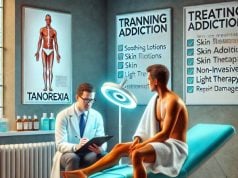
Inhaling gasoline fumes from a rag, spraying keyboard cleaner into a bag, or “huffing” paint thinner behind the garage may sound like fringe behaviors, yet millions worldwide have tried it—and thousands develop a rapid, life-threatening addiction. Volatile solvents are cheap, legal, and found in everyday products, making them easy for adolescents and marginalized adults to obtain. The intoxicating rush lasts seconds, but repeated exposure can damage the brain, heart, liver, and lungs in minutes. This guide unpacks the hidden epidemic of solvent misuse, explaining how dependence forms, who is most at risk, and the evidence-backed pathways to lasting recovery.
Table of Contents
- Scope of Use and Global Patterns
- Chemical Drivers and Vulnerability Factors
- Recognizing Red Flags and Diagnostic Process
- Body, Mind, and Social Fallout
- Intervention Strategies and Long-Term Healing
- Frequently Asked Questions
Scope of Use and Global Patterns
Volatile solvents—also called inhalants—include gasoline, toluene-based glues, correction fluid, butane lighter refill, paint thinners, nail-polish remover, and aerosol propellants. Unlike most illicit drugs, they require no dealer. A hardware aisle, office supply cabinet, or parked car is enough. Epidemiologists describe solvent misuse as the “poor person’s high” because it surfaces where other substances are scarce or expensive—yet it also appears in suburban bedrooms and college dorms where curiosity collides with availability.
Worldwide Prevalence Snapshot
- Youth experimentation: In many nations, solvent sniffing ranks third after alcohol and cannabis for first-time drug use among 12- to 16-year-olds. In some Indigenous communities of Australia and Canada, lifetime prevalence can exceed 20 %.
- Urban vs. rural: Large cities see episodic “chroming” (spray-paint inhalation) among homeless teens, while remote villages report chronic gasoline sniffing tied to boredom and unemployment.
- Gender trends: Historically male-dominant, recent surveys reveal narrowing gaps; girls increasingly cite weight control and stress relief as motives.
- Age distribution: Use typically peaks between ages 12 and 17, then declines as access to alcohol, cannabis, or stimulants rises—yet a subset continue into adulthood, often alongside polysubstance dependence.
Social and Economic Context
- Low cost, high potency: A \$5 can of butane or a stolen can of paint thinner provides dozens of “hits,” making solvents appealing where disposable income is low.
- Legal loopholes: Despite warning labels, most countries sell these products unrestricted to minors, complicating enforcement.
- Media portrayal: Occasional news stories about “huffing deaths” draw attention, yet the short cycle of headlines fails to build sustained public-health campaigns.
- Cultural rituals: In certain marginalized groups, communal inhalation sessions substitute for formal social gatherings, reinforcing group identity but worsening harm.
Key insight: Volatile solvent addiction flourishes at the intersection of accessibility, curiosity, and social deprivation—requiring multidimensional prevention rather than mere product bans.
Chemical Drivers and Vulnerability Factors
Why can a whiff of lighter fluid hook the brain faster than a glass of beer? The answer lies in solvent chemistry and individual susceptibility.
Pharmacology in Seconds
- Rapid absorption: Solvent vapors cross alveolar membranes and the blood-brain barrier within seconds. Peak brain concentration occurs in 30–90 seconds, inducing euphoria, dizziness, and visual distortions.
- Mechanistic cocktail: Most solvents act as non-specific central-nervous-system depressants, potentiating GABA_A receptors (like benzodiazepines) while inhibiting NMDA glutamate receptors (like ketamine) and altering dopamine release (reward pathway).
- Oxygen displacement: Inhaling from plastic bags or direct spraying into the mouth reduces available oxygen, creating hypoxic buzzes but risking fatal arrhythmia.
Acute Reinforcement vs. Chronic Dependency
| Phase | Neurochemical Event | User Experience | Reinforcement Loop |
|---|---|---|---|
| Initial exposure | Dopamine surge in nucleus accumbens | “Head-rush,” giggles, color flashes | Curiosity to repeat |
| Repeated binges | GABA up-regulation, NMDA down-regulation | Sedation alternates with agitation | Tolerance, longer sessions |
| Chronic use | White-matter damage, cerebellar atrophy | Tremors, memory gaps, mood swings | Use to relieve dysphoria |
Individual Risk Amplifiers
- Early childhood adversity: Neglect, abuse, or household substance use can prime the brain’s stress circuits, making rapid numbing effects of solvents especially appealing.
- ADHD and conduct disorders: Impulsivity and novelty-seeking blunt risk perception; solvents’ quick onset satisfies sensation hunger.
- Genetic factors: Variants in genes encoding GABA_A subunits or dopamine transporters may heighten reinforcement; research is ongoing but parallels alcohol vulnerability profiles.
- Nutritional deficiencies: Malnourishment exacerbates neurotoxicity and lowers cognitive reserve, intensifying solvent damage.
- Exposure to poverty and overcrowding: Emotional stress, limited recreation, and inadequate adult supervision set the stage for group inhalation experiments.
Environmental Cues
- Odor triggers: The smell of gasoline at a station can ignite cravings years into abstinence.
- Visual prompts: Metallic aerosol cans or glue tubes act like paraphernalia, priming the ritual.
- Peer pressure: Group “buzzing” sessions bind teens through shared risk, making refusal socially costly.
Action tip: Mapping personal triggers—smells, locations, emotions—helps tailor avoidance and coping strategies during recovery.
Recognizing Red Flags and Diagnostic Process
Because solvent intoxication fades within minutes and leaves no telltale needle marks, caregivers often miss early warning signs. Timely recognition can avert irreversible organ damage.
Behavioral Warning Lights
- Chemical-soaked clothing or rags hidden in backpacks or under beds.
- Crusted paint around mouth or nose (chroming) or gasoline odor on breath.
- Sudden nosebleeds, cough, or sore throat without infection.
- Declining school or job performance paired with secretive isolation.
- Risky improvisations: Spraying aerosol into balloons, plastic bags, or directly into the mouth (“dusting”).
Physical and Neurological Symptoms
- Early signs: Slurred speech, unsteady gait, nystagmus (rapid eye flicking), nausea, redness around the eyes.
- Intermediate: Headaches, ringing in ears, tremors, mood swings, short-term memory loss.
- Chronic: Peripheral neuropathy (numb feet/hands), cerebellar ataxia (wobbly walk), attention deficits, hearing loss, weight loss.
- Emergency red flags: Chest pain, muscle spasms, seizures, fainting—signal potential cardiac arrhythmia or hypoxic brain injury.
Self-Screen Inventory
Answer yes or no:
- Do you inhale household chemicals more than once a week?
- Have you ever lost consciousness or woken confused after inhaling?
- Do friends or family worry about chemical smells or your behavior?
- Have you tried to stop but felt anxious, shaky, or depressed?
- Have you continued despite blackouts, injuries, or legal trouble?
Three “yes” answers suggest problematic use warranting clinical evaluation.
Professional Diagnostic Steps
| Step | Tool or Test | Purpose |
|---|---|---|
| History & interview | Structured DSM-5 substance-use checklist adapted for inhalants | Establish dependence criteria |
| Physical exam | Neurological focus—coordination, reflexes, cranial nerves | Detect cerebellar or peripheral damage |
| Laboratory tests | Liver enzymes, renal panel, CBC, electrolyte levels | Identify systemic toxicity |
| Imaging | MRI for chronic users—white-matter lesions, cerebellar atrophy | Measure neurodegeneration baseline |
| Urine volatile screen | Limited utility (rapid clearance) | Confirms recent but not chronic use |
| Psychometric scales | Beck Depression Inventory, ADHD screens | Address comorbidities |
Clinician note: Inhalant users may minimize use; objective signs (odor, paint stains, neurological deficits) often tell the fuller story.
Body, Mind, and Social Fallout
Volatile solvent addiction inflicts damage that can outpace many illicit drugs, partly because toxic chemicals target multiple organs simultaneously.
Physiological Consequences
- Cardiotoxicity
- Sudden sniffing death: Hydrocarbon sensitizes myocardium to adrenaline; surprise scare or exertion triggers fatal arrhythmia.
- Chronic cardiomyopathy: Weakening heart muscle leads to fatigue and edema.
- Neurological damage
- Myelin breakdown: Toluene dissolves lipid sheaths, slowing nerve signals; presents as shaky hands, impaired balance.
- Cognitive decline: Attention, memory, and executive function erode, sometimes irreversible after prolonged use.
- Hepatic and renal stress
- Liver metabolizes solvents into toxic intermediates, elevating AST/ALT and risking hepatitis-like injury.
- Kidney tubule damage impairs filtration, causing proteinuria and chronic renal insufficiency.
- Pulmonary irritation
- Chemical pneumonitis from inhaling aerosol propellants; coughing and wheezing persist even after cessation.
- Frostbite burns inside airway when compressed gas sprays directly into throat.
- Gastrointestinal issues
- Reflux, vomiting, and stomach cramps from swallowed solvent residue.
Psychosocial Toll
| Domain | Manifestation | Downstream Impact |
|---|---|---|
| Education | Truancy, learning problems | Dropout risk |
| Employment | Frequent absenteeism, workplace accidents | Job loss |
| Legal | Trespassing or theft to obtain solvents | Juvenile or adult records |
| Family | Trust erosion, domestic conflict | Estrangement |
| Mental health | Depression, anxiety, suicidal ideation | Self-harm attempts |
Financial and Community Costs
- Medical expenses: Emergency visits, long-term neurorehabilitation, dialysis for renal failure.
- Environmental damage: Empty solvent containers littering neighborhoods, inhalation sites contaminated with toxic spills.
- Intergenerational trauma: Children witnessing parental intoxication face higher odds of replication.
Sobering fact: Thirty seconds of inhalation can cause brain changes visible on MRI; early intervention literally saves gray matter.
Intervention Strategies and Long-Term Healing
Freedom from solvent addiction is possible, though success requires integrated medical, psychological, social, and environmental supports.
1. Acute Medical Management
- Stabilize airway and circulation—administer 100 % oxygen, monitor ECG for arrhythmia, correct acidosis with IV fluids.
- Decontamination—remove solvent-soaked clothing, wash skin with mild soap to prevent dermal absorption.
- Neurological monitoring—watch for seizures; treat with benzodiazepines if needed.
- Hepatic/renal labs—baseline for follow-up; severe values may warrant ICU.
2. Detoxification and Early Withdrawal Care
Unlike opioids, inhalants rarely show severe physiological withdrawal, but psychological rebound can be intense.
| Symptom | Onset | Management |
|---|---|---|
| Headache, nausea | 6–12 h | Hydration, antiemetics |
| Insomnia, irritability | 24–72 h | Sleep hygiene, melatonin, short-term trazodone |
| Anxiety, craving | Days–weeks | CBT coping skills, beta-blockers for tremor |
3. Evidence-Based Psychosocial Treatments
- Motivational Interviewing (MI)—builds readiness to change, especially in ambivalent teens.
- Cognitive-Behavioral Therapy (CBT-Ih)—identifies sniffing triggers, restructures beliefs (“I need this to feel good”), and rehearses alternative coping.
- Contingency Management (CM)—voucher or point system rewarding negative breathalyzer or urine surrogates (e.g., onsite supervision to ensure abstinence).
- Multidimensional Family Therapy (MDFT)—addresses family dynamics, parenting skills, communication, and community supports.
- Cultural healing programs—Indigenous-led camps that integrate traditional ceremonies with counseling show promising retention and identity repair.
4. Pharmacological Adjuncts (Experimental)
| Medication | Rationale | Current Evidence |
|---|---|---|
| N-acetylcysteine (NAC) | Modulates glutamate, reduces craving | Positive in small inhalant case series |
| Topiramate | GABA/glutamate balance | Limited reports, helps impulse control |
| Baclofen | GABA_B agonist dampens reward | Anecdotal benefit, needs trials |
| SSRIs | Treat comorbid depression/anxiety | Supportive when mood disorders present |
No drug specifically “detoxes” solvents; medications support mood stabilization and impulse control.
5. Environmental and Harm-Reduction Strategies
- Lockable storage for fuels, aerosols, and solvents in households and community centers.
- Substitution campaigns where remote communities replace unleaded gasoline with avgas containing aversion additives.
- Youth recreation programs—sports, art workshops, and mentoring reduce idle time.
- School curricula featuring peer-led testimonials deter initiation.
- Community cleanup events remove accessible empty containers that cue relapse.
6. Recovery Maintenance
| Pillar | Practical Steps |
|---|---|
| Healthy routine | Balanced meals, hydration, regular sleep reset neurotransmitters and repair organs. |
| Exercise therapy | Aerobic activity stimulates neurogenesis and endorphins, replacing chemical highs. |
| Vocational training | Skill development restores purpose and income, offsetting boredom triggers. |
| Support networks | Sponsor-like relationships via 12-step (e.g., Solvent Anonymous) or local peer groups. |
| Relapse-prevention planning | Identify early warning—solvent smells, old friends, payday temptations—and rehearse exit strategies. |
7. Measuring Progress
- Neuropsychological testing every 6–12 months tracks cognitive recovery.
- Liver/renal panels show organ rebound.
- Quality-of-life scales (WHOQOL-BREF) reflect psychosocial healing.
- Community participation metrics—school attendance, job retention, volunteer hours—signal full integration.
Hope note: White-matter repair begins within weeks of abstinence; the earlier support arrives, the higher the chance of near-complete neurological recovery.
Frequently Asked Questions
Can a single night of huffing kill you?
Yes. Even first-time users risk “sudden sniffing death,” where heart rhythm collapses after a fright or vigorous activity. Always treat solvent inhalation as a medical emergency.
Do inhalants show up on standard drug tests?
Most workplace panels miss them because solvents evaporate quickly. Specialized blood or breath tests exist but must be ordered promptly after exposure.
Is euphoria from solvents the same as alcohol intoxication?
They share some depressant effects, but solvents add hallucinations, rapid onset, and greater neurotoxicity. The risk of acute organ damage is also higher.
What should I do if I catch someone sniffing?
Move them to fresh air, keep them calm (to avoid adrenaline spike), call emergency services if unconscious or breathing irregularly, and store product out of reach once safe.
Are there safer inhalants like nitrous oxide?
No inhalant is risk-free. Nitrous can cause nerve damage and asphyxiation. Harm-reduction focuses on avoiding inhalation rather than substituting products.
Why do users relapse after months clean?
Odor cues, stress, or social isolation can trigger intense cravings. Ongoing therapy, supportive peers, and structured routines are crucial for relapse prevention.
Disclaimer
This article is for educational purposes only and should not be considered a substitute for professional medical, psychological, or legal advice. Always seek qualified healthcare guidance if you or someone you know is inhaling volatile solvents or experiencing related health problems.
If you found this resource helpful, please share it on Facebook, X (formerly Twitter), or any platform you prefer, and follow us for more evidence-based content. Your support helps us continue producing reliable, life-enhancing information—thank you!










